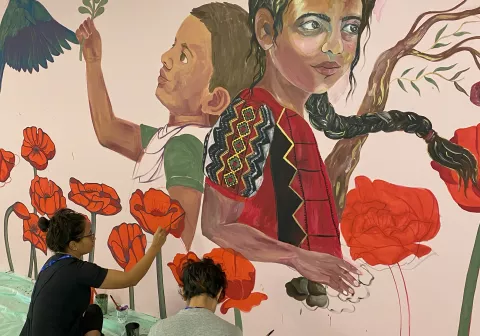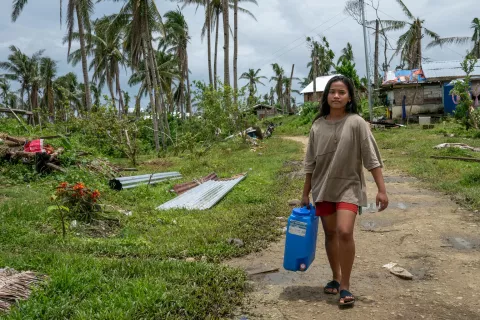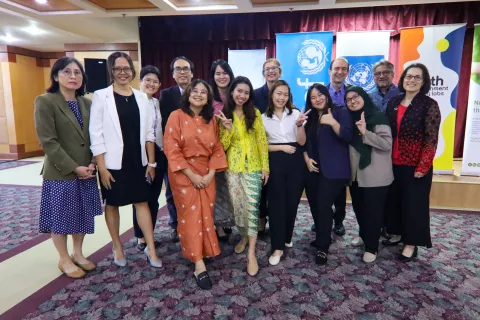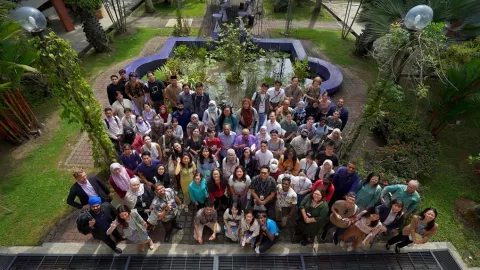The heat is on
Extreme weather change & its effect on children in Malaysia

With accelerating climate change and environmental degradation, the world is seeing drastic changes in weather patterns as well as availability of clean air, clean water and nutritious food. All life on the planet will be affected, but not equally so. A new study zeroes in on the fact that in these scenarios, children have the most to lose.
For the average middle income urban Malaysian, weather conditions that seem to be veering on the edge of extreme are a slight inconvenience. If it’s a particularly hot day, a flick of the aircon switch brings cool relief. On other days when the rain and thunder seem unending and even violent, there’s always the choice of staying home with a cup of hot tea.
But for many others, the changing weather patterns are not so easily accommodated in everyday life. Consequences of hotter spells and longer rainy seasons can be dire, from disrupted livelihoods and interrupted education, to not being able to get to the nearest healthcare facility.
“If the rain is heavy, and there is a storm and strong waves, we can’t go to the hospital [on the mainland]…we are afraid that the boat will overturn… Even if your child is really sick, you just need to wait,’” said a resident of Pulau Gaya, an island off the coast of Sabah. Pulau Gaya is a 15-min boat ride from Kota Kinabalu and its inhabitants constantly deal with the challenges of rough seas that interrupt their daily lives.
Meanwhile, in Pos Kuala Mu, an Orang Asli village in Perak, landslides and overflowing rivers are becoming a recurring problem brought on by both deforestation and heavier rains. For students, this means many missed days at school. For parents, it means loss of income when they can’t go out to work.
A focus on children
These are some of the stories that have been unearthed in the study, ‘Impact of Climate Change on Children: A Malaysian Perspective’. This is the first study that addresses children as an especially vulnerable group vis-a-vis the impact of climate change and environmental degradation in the country.
Conducted by Universiti Kebangsaan Malaysia (UKM), in collaboration with UNICEF and Universiti Malaysia Sabah (UMS), the main study activities were carried out between March 2020 and May 2021. According to the report, an analysis of secondary data showed that we are experiencing more intense rainfall, which has led to more floods and natural disasters. The study also projected hotter, longer and more frequent heat waves as well as longer rainy seasons.
This will affect us all; so why the focus on children?
Compared to adults, children are disproportionately affected. The study reports that “accelerated climate change and environmental degradation present serious risks for children in Malaysia. From floods and vector-borne diseases to worsening air quality and improper disposal of hazardous wastes, children will bear the brunt of the impacts, with consequences seen in terms of health, well-being, education and future income, among others.”
Living on the Margins
As part of the study, the research team also spotlighted the precarious position of marginalised children who live on the periphery of mainstream society. On-the-ground engagement was carried out with three communities: the children of Pulau Gaya, the Temiar indigenous people living in Pos Kuala Mu, Perak, and the urban poor at PPR Sg Bonus in Setapak, Kuala Lumpur.
“As we explored their lives, we began to understand the painful realities of vulnerable children faced with the harsh and tough consequences of the changing climate and environment,” said Dr Mazrura Sahani, Professor at UKM and the Principal Investigator of the study team.
According to her, there are many reasons why marginalized children are more likely to be affected by climate change compared to other children. “Many stay in areas that are already prone to flood and drought. These are places that are hit badly by extreme weather conditions. Many kampungs don’t have access to clean water and proper sanitation services. They may live far away from clinics and hospitals. All these things work against the child,” she said.
In addition, a lack of access to quality education means that these children have limited access to information and therefore limited awareness of the issues of climate change and environmental degradation.
“Many of the children we met on Pulau Gaya and at Pos Kuala Mu would miss out on school simply because they could not get to class when it rained heavily,” Dr Mazrura noted. “The longer the rainy season lasts, the more they will miss out. How will they get an education that is solid enough for them to better their futures?”
In urban areas, the effects differ but children are still affected. When the team carried out their focus group discussions with the B40 community living at PPR Sg Bonus in Kuala Lumpur, they found parents struggling with the knock-on effects of extreme weather conditions not in the city itself, but at farms and other agriculture sources. “When farms are hit with changing weather patterns, prices of produce go up. Families who survive on a bare minimum household income struggle to cope with the increased expenditure. In the end, it is the children who suffer from malnutrition and just plain hunger,” Dr Mazrura said.
This is just the tip of the iceberg. The report lays out many other aspects to the issue from haze pollution and vector-borne diseases like malaria and dengue, to how climate change impacts girls and boys differently. For example, on Pulau Gaya, because girls are perceived as physically more vulnerable to climate change, they tend to be better protected by their families and community in the face of climate and environmental risks. On the island, as well as with the community at PPR Sg Bonus, the study found that boys were more likely to drop out of school to work if their parents’ sources of income became scarce. However, at Pos Kuala Mu, it was the girls who were more likely to drop out to help the family.
The way forward
Among the recommendations highlighted in the report was a move towards a more child-sensitive governance framework. The report states: “Children often fare the worst in climate- and weather-related disasters such as floods, droughts, forest fires and cyclones. And yet children are consistently overlooked in the design and content of climate policies and processes.”
Laws and policies that explicitly address children’s vulnerability to climate change and environmental degradation need to be put in place. For example, with the increasing cases of water pollution by errant companies, the law should recognize environmental hazards as a potential cause of harm to children. This will enable more effective justice to be brought on those who commit environmental crimes, especially those that affect children and other vulnerable groups.
Children also need to be equipped with awareness and knowledge and this starts with having an education system that is climate-smart. Content should be developed that helps raise awareness of climate issues, and teachers should be supported to deliver these topics effectively.
This will help support another key recommendation which is to empower children as stakeholders in policies and rule of law initiatives that affect them. Dr Rashed Mustafa Sarwar, Representative to Malaysia and Special Representative to Brunei Darussalam, stresses the importance of supporting advocacy and representation for children and vulnerable groups: “All children have a right to participate in issues that affect them. This really benefits everyone as policies and laws can take into account the real concerns and realities of children. It also allows children to develop a participative mindset and develop knowledge and skills.”
Children are already increasingly aware of the dangers of climate change and are demanding more decisive action from their governments. In a survey of 1,101 young Malaysians by YouGov in 2019, 64 per cent stated they were concerned about climate change. Many said that they had either experienced, or were aware of, its effects. However, only 5 per cent believed that Malaysia was prepared.
“We hope this report will help spark more interest and concern over how children are at the receiving end of climate change impact and that to protect them, we need to urgently put positive actions in place,” says Dr Sarwar.
‘Impact of Climate Change on Children: A Malaysian Perspective’ 2021 report was launched on 29 October 2021 in the lead up to the COP26. The full report is available on the UNICEF Malaysia website at https://unicef.org/malaysia/reports/impact-climate-change-children.




